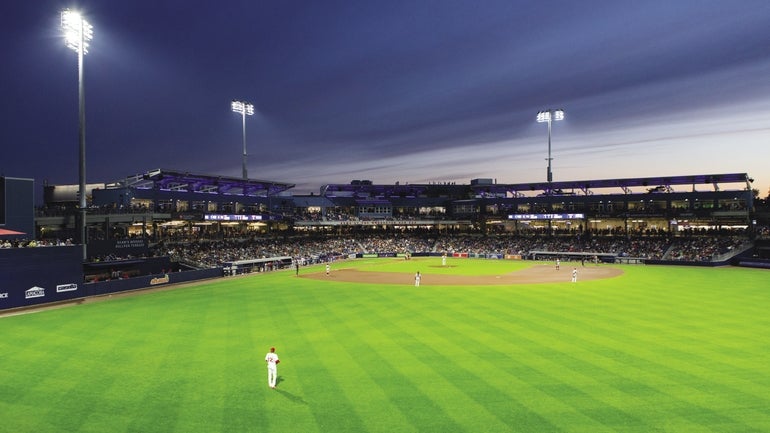In a world of COVID-reduced expectations, the Worcester Red Sox were pleased with the home attendance in their inaugural season at Polar Park, although the baseball team wants to increase that for its second season.
Get Instant Access to This Article
Subscribe to Worcester Business Journal and get immediate access to all of our subscriber-only content and much more.
- Critical Central Massachusetts business news updated daily.
- Immediate access to all subscriber-only content on our website.
- Bi-weekly print or digital editions of our award-winning publication.
- Special bonus issues like the WBJ Book of Lists.
- Exclusive ticket prize draws for our in-person events.
Click here to purchase a paywall bypass link for this article.
In a world of COVID-reduced expectations, the Worcester Red Sox were pleased with the home attendance in their inaugural season at Polar Park, although the baseball team wants to increase that for its second season.
“Our expectation is getting even stronger attendance figures,” said Dan Rea, WooSox general manager and executive vice president. “I feel confident - yes. I would expect numbers that are comparable, if not better, next year.”
In a season beset by capacity restrictions, first due to coronavirus gathering limitations, and then delays in the completion of the $160-million Polar Park stadium, the WooSox averaged 6,145 fans per home game in 2021, making them sixth among the 120 Minor League Baseball teams. Still, that number is not quite what team and city officials projected when they excitedly announced in 2018 the team would relocate from Pawtucket, R.I.
“Before COVID, if you would have said the team would average 6,100 in its inaugural season, that would have been a disaster of a number,” said Victor Matheson, a professor specializing in sports economics at the College of the Holy Cross in Worcester.
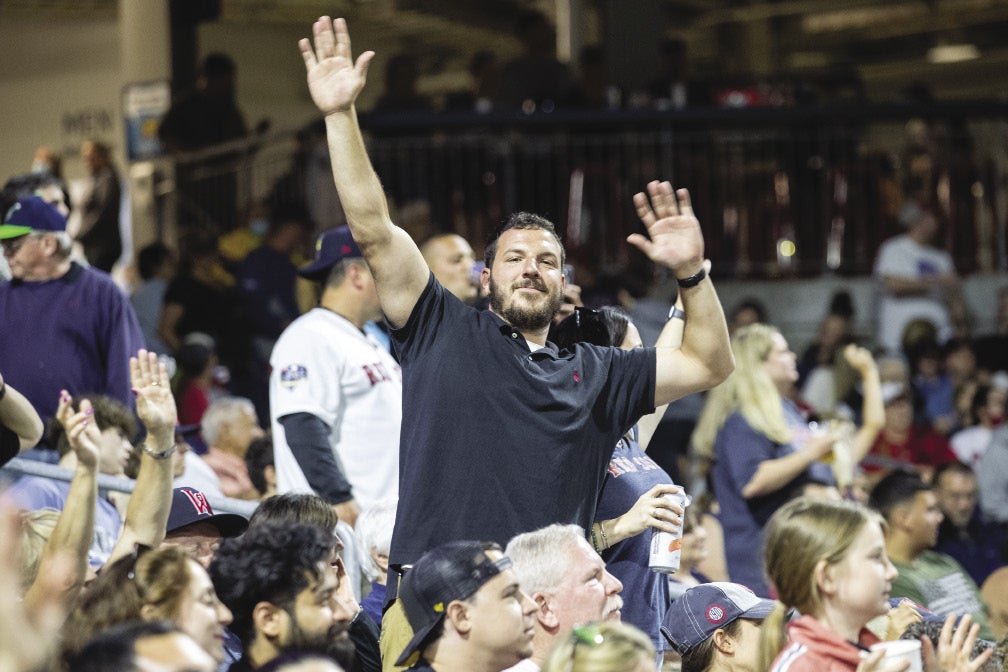
Of the other teams who finished top 10 in attendance, Matheson said they averaged a decrease of 2,200 in fans per game for 2021, while the WooSox saw an increase of 900 fans per game, compared to their 2019 season in Pawtucket.
“It was way better than the zero attendance they all had in 2020,” Matheson said. “This is a weird season in general for folks overall.”
Like Rea, Matheson expects the WooSox attendance to increase in the team’s second season, although the pandemic is eating into the 10-year honeymoon period teams typically get when they move into a new stadium.

Rising attendance, limited sellouts
For the first 12 home games of the WooSox season, state-mandated COVID regulations limited attendance to 2,377. After that, the construction of Polar Park was ongoing, limiting capacity in various stages until all the seats could be opened for ticket sales. Average game attendance in June was 6,813, followed by 7,151 in July.
“We figured this was the hand we were dealt,” Rea said. “We had high expectations. Even with the specter of COVID, we thought we would have a robust turnout.”
The team sold out the planned capacity of 9,508 for the first time on July 31, when Boston Red Sox All-Star Chris Sale pitched a rehab game. Polar Park then averaged 6,776 fans per game in August and 7,830 in September, which ended with the second sellout capacity of 9,508 on Sept 26.
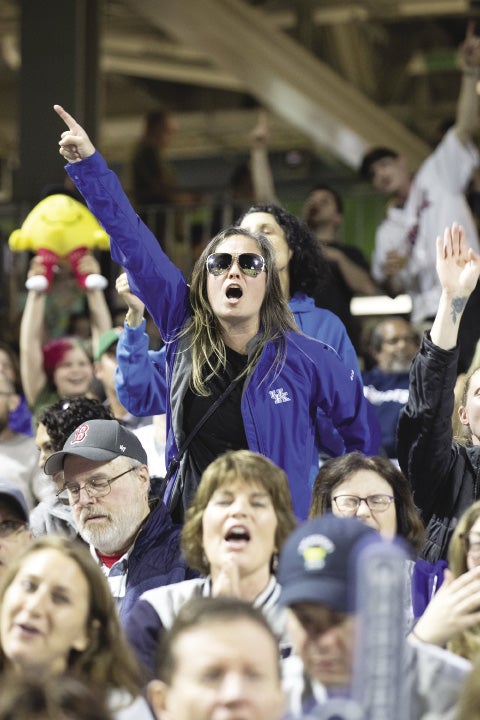
Rea said the team expects to have more games in 2022 where the stadium hits its 9,508 capacity, as well as more high ticket-sale games with more than 8,500 fans. Seven games hit that 8,500+ attendance in 2021.
In addition to limiting capacity at the season's start, the coronavirus created uncertainty in the WooSox front office, as team officials spent the winter and early spring not knowing if they could even sell tickets to games, Rea said. This coming winter, the team now can aggressively market its ticket packages, meet with more fans and sponsors, and spread the buzz generated in the inaugural season, he said.
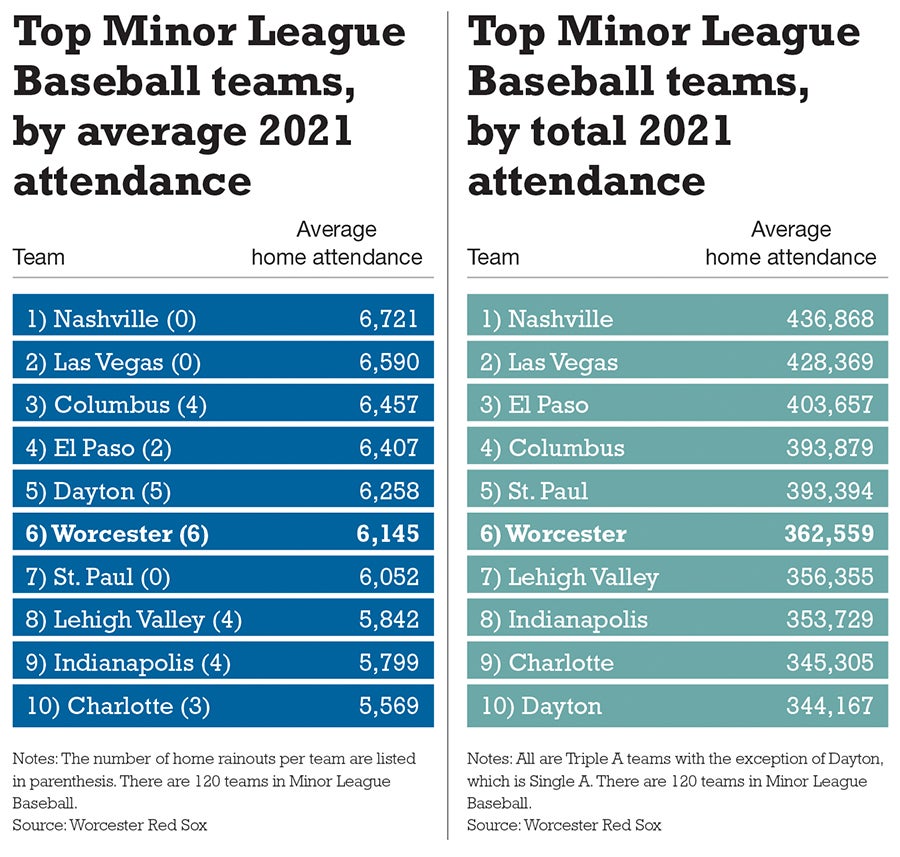
Less enthusisam, more certainty
The honeymoon period minor league teams experience after opening a new stadium typically leads to a bump of about 2,200 fans per game in the inaugural season, which then slowly deteriorates until that increase is about 200 in the 10th season, Matheson said.
Although the enthusiasm for the team will dip slightly in the second season, the team will benefit as uncertainty surrounding the coronavirus pandemic dips as well, Matheson said.
“The challenge is not only getting people to come for a game, but to then come back for another game,” Matheson said. “It is a great stadium. There is no doubt about that.”
The attendance figures only told part of the 2021 story, he said, as the demand for Worcester minor league baseball spiked ticket prices from what the team charged in Rhode Island.
“Financially, they probably had a very successful year,” Matheson said.
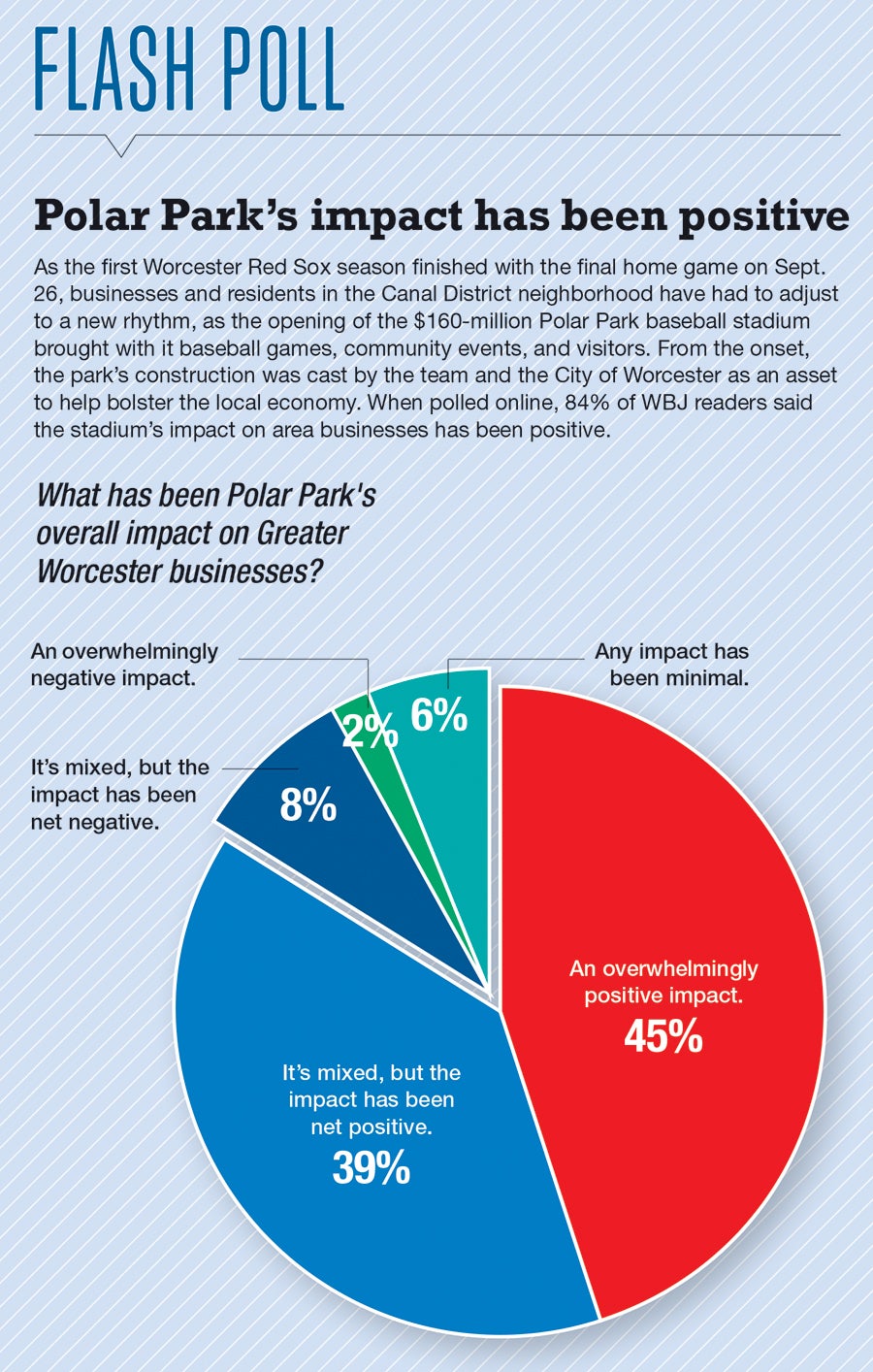
Stadium payments
That team success, though, may not translate into the City of Worcester’s efforts to pay for the cost to build the public stadium strictly using funds generated from within the special district surrounding the ballpark, Matheson said.
Fewer tickets mean fewer fees collected to go toward the city’s bond payments on the stadium, he said. A surrounding development from Boston firm Madison Properties set to feature hotels, apartments, office space, and retail, which was originally anticipated to open mostly at the same time as the stadium and generate significant tax revenues to cover stadium costs, has been delayed years and shrunk in size.
The city’s portion of the $160-million construction costs is $88.2 million, while the team is paying $60.2 million and the state and federal governments kicked in $10.7 million.
“The city is in a fairly significant hole right now,” Matheson said
Although the city is in a hole on the debt service, this was anticipated for the first few years of the bond repayment plan, said Timothy McGourthy, CFO for the City of Worcester. The city has created a cash reserve to make up for any shortfalls in revenue from the taxing district around the ballpark.
That reserve has $300,000, McGourthy said, all from the anticipated sale of a portion of the ballpark property near Green Street to Worcester developer Churchill James, which is planning a 13-story apartment tower. Once the sale is finalized, the reserve will grow to $3.2 million.
For fiscal 2021, which ended June 30 and included the first two months of the WooSox season, the city needed the stadium taxing district to generate about $640,000 to cover the remainder of the $2.1-million stadium bond payment not already paid for by the capitalized interest. The revenue from the ballpark district fell short, generating about $391,000.
The shortfall was covered by the reserve, McGourthy said. For the next two fiscal years, the city's payments on the bonds rises to $3.9 million and $4.8 million, with the ballpark district needing to generate about $4.9 million combined to break even on the bond payments.
"The reserve is there for those initial years," he said.
